第6章
It is clear then how locomotion belongs to those animals only which make their changes of place by means of two or four points in their structure, or to such animals par excellence.Moreover, since this property belongs almost peculiarly to Sanguineous animals, we see that no Sanguineous animal can progress at more points than four, and that if it is the nature of anything so to progress at four points it must of necessity be Sanguineous.
What we observe in the animal world is in agreement with the above account.For no Sanguineous animal if it be divided into more parts can live for any appreciable length of time, nor can it enjoy the power of locomotion which it possessed while it was a continuous and undivided whole.But some bloodless animals and polypods can live a long time, if divided, in each of the severed parts, and can move in the same way as before they were dismembered.Examples are what is termed the centipede and other insects that are long in shape, for even the hinder portion of all these goes on progressing in the same direction as before when they are cut in two.
The explanation of their living when thus divided is that each of them is constructed like a continuous body of many separate living beings.It is plain, too, from what was said above why they are like this.Animals constructed most naturally are made to move at two or four points, and even limbless Sanguinea are no exception.They too move by dint of four points, whereby they achieve progression.They go forward by means of two flexions.For in each of their flexions there is a right and a left, both before and behind in their flat surface, in the part towards the head a right and a left front point, and in the part towards the tail the two hinder points.They look as if they moved at two points only, where they touch before and behind, but that is only because they are narrow in breadth.Even.
in them the right is the sovereign part, and there is an alternate correspondence behind, exactly as in quadrupeds.The reason of their flexions is their great length, for just as tall men walk with their spines bellied (undulated) forward, and when their right shoulder is leading in a forward direction their left hip rather inclined backwards, so that their middle becomes hollow and bellied (undulated), so we ought to conceive snakes as moving in concave curves (undulations) upon the ground.And this is evidence that they move themselves like the quadrupeds, for they make the concave in its turn convex and the convex concave.When in its turn the left of the forward parts is leading, the concavity is in its turn reversed, for the right becomes the inner.(Let the right front point be A, the left B, the right hind C, the left D.)Among land animals this is the character of the movement of snakes, and among water animals of eels, and conger-eels and also lampreys, in fact of all that have their form snakelike.However, some marine animals of this shape have no fin, lampreys for example, but put the sea to the same use as snakes do both land and water (for snakes swim precisely as they move on the ground).Others have two fins only, for example conger-eels and eels and a kind of cestreus which breeds in the lake of Siphae.On this account too those that are accustomed to live on land, for example all the eels, move with fewer flexions in a fluid than on land, while the kind of cestreus which has two fins, by its flexion in a fluid makes up the remaining points.